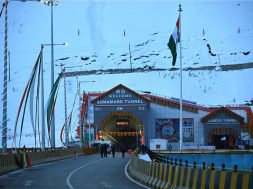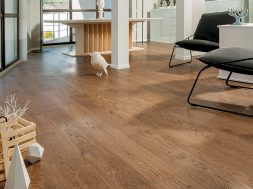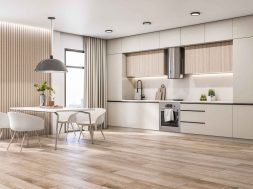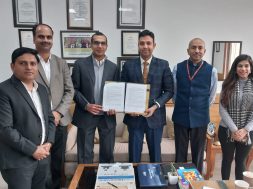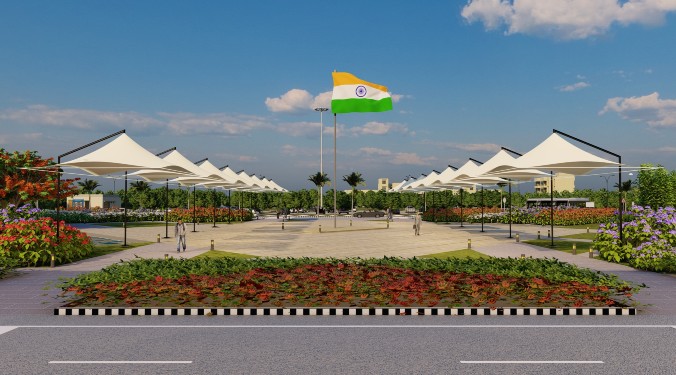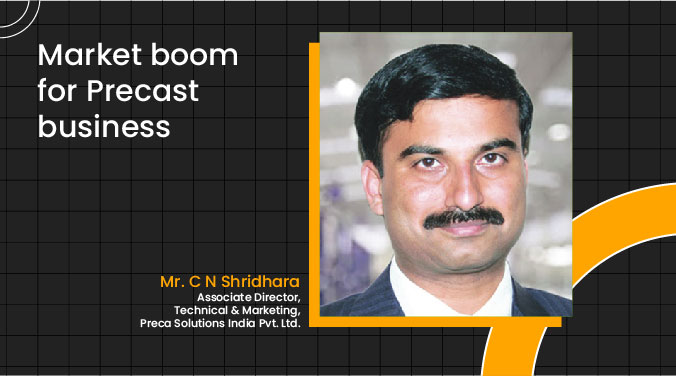“There is a need to design green buildings and the essence of which is to address the issues in an integrated and scientific manner,” says Ar Raghvendra Bisen
Raghvendra Bisen has been setting new standards in architecture with designing projects which serve the habitants rather than becoming just mere blocks of concrete and materials put together. Here Ar Raghvendra Bisen discusses how practising real architecture can create healthy and sustainable living structures.
Involvement towards architectureDuring my architecture education at the Government College of Architecture, Lucknow, expert faculties groomed me, this inspired and transformed my thought process as well as inculcated the passion for architecture. My understanding towards the various materials, adoption in innovation of construction details and critical structural analysis along with other elements of applied architecture has been instrumental in creating sustainable built forms.
Journey and evolution of architectureIndia’s architectural structures continually evolved to suit the needs of the culture. Dome shaped structures similar in appearance to the Sanchi stupa served as commemorative monuments that held sacred artifacts. The golden age of Indian architecture spanned from 230 CE to 1200 CE. The southern regions adopted the complex structures found in the northern regions. The Colonial Era lasted until 1947 and introduced British and European architectural styles that included extended roof overhangs and free standing pavilions. Government buildings, railway systems and roadways predominantly featured the combination of styles. Rashtrapati Bhavan located in New Delhi represents an example of the merged designs.
Post Independence phase saw architectural changes based on the needs of the population after 1947. Small villages evolved into urban and industrial regions. Economic increase along with modern globalisation, immigration and tourism sparked the introduction of secure government buildings and public structures that allowed the country to compete with developed world countries.
Most challenging projectsPLOT NO- 9 spread over 2.5 acres plot with the built up expanse of 41,636sq.m and parking space for about 280 cars, The LIBRARY CLUB situated in sector-127, Noida. The buildings have achieved a pre-certification of being – Platinum LEED rated by the IGBC (Indian Green Building Council). The building is a multi-tenant project that is based around the concept of creating a congenial campus like environment, where every tenant can share common area facilities, with their privacy unharmed.
The towers are staggered horizontally and vertically giving each one visibility from the road. All the exterior shading systems have been designed keeping in mind the problems of glare and heat gain and so the façade as a whole stands strong against the various problems of the sun. As per building simulation results the building would be saving 40 per cent of the energy, if put in comparison with similar buildings.
Need for green buildingsBuildings have major environmental impact during their useful life. Resources such as ground water, land cover, forests/ greenery and energy are dwindling to give way to buildings. Several building processes and occupant functions generate large amounts of waste, which can be recycled for use or can be reused directly. Buildings are thus one of the major pollutants that affect urban air quality and contribute to climate change. There is a need to design green buildings and the essence of which is to address the issues in an integrated and scientific manner. It is a known fact that it costs more to design and construct a green building compared to other buildings. However, it is also a proven fact that it costs less to maintain a green building that has tremendous environmental benefits and provides a better place for the occupants to live and work in.
Advice for young aspirantsHard work is necessary, but that too on its own does not count. To achieve excellence in architecture, one must love architecture, should have high level of creativity, sound technical knowledge, know what is down to earth and practical, know the construction process, understand the practical difficulties of the builder, and most importantly , carry a good concept right through completion of the project – without losing the original concept somewhere mid way. One must keep on learning new stuff as they come. Constantly updating knowledge through attending seminars, webinars, and information gathered from the internet, etc. etc. Never lose curiosity and stop learning further. All of the above should be coupled with moral and ethical integrity – unshakable integrity and “achievement” does not happen overnight. You have to prove yourself again and again, over and over. This is the fact of life.
12
Cookie Consent
We use cookies to personalize your experience. By continuing to visit this website you agree to our Terms & Conditions, Privacy Policy and Cookie Policy.
